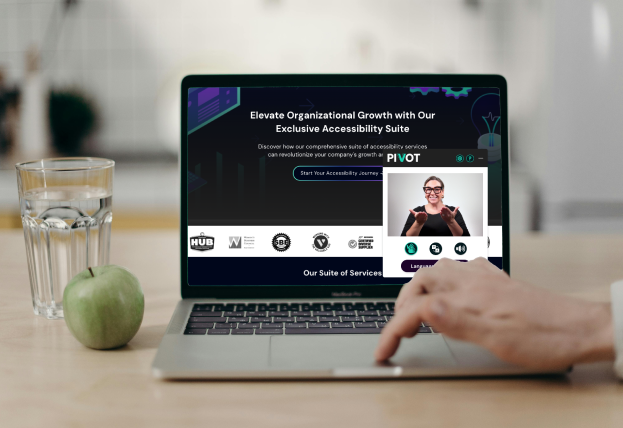Why Accessibility Audits Matter for Corporations
Accessibility audits allow corporations to identify barriers that could exclude people with disabilities from accessing their websites, physical spaces, and digital platforms. These audits also provide a roadmap to create a more inclusive environment while minimizing legal risks and strengthening brand reputation.
Key Components of an Accessibility Audit for Corporations
- Understand Accessibility Standards
Corporations must align with accessibility regulations such as ADA (Americans with Disabilities Act), WCAG (Web Content Accessibility Guidelines), and Section 508 (applicable to federally funded organizations). Staying compliant with these standards demonstrates a commitment to inclusivity and avoids costly lawsuits. - Conduct a Thorough Review
A proper audit examines all aspects of accessibility, including:- Websites and apps for screen reader compatibility, keyboard navigation, and alt text for images.
- Physical spaces for features like ramps, elevators, and signage readability.
- Documents for compliance with accessibility standards like PDF/UA.
- Engage Accessibility Experts
Partner with professional auditors and consultants who have experience with accessibility laws and assistive technologies. Their expertise will help ensure a comprehensive evaluation and practical recommendations. - Include Stakeholders in the Process
Collaborate with employees with disabilities, internal teams, and external accessibility advocates to gain diverse insights into your accessibility efforts. - Plan for Ongoing Improvement
Accessibility is not a one-and-done process. Build accessibility into your long-term strategy by scheduling regular audits, staying updated on evolving standards, and fostering a culture of inclusivity.
The Benefits of Accessibility Audits for Corporations
Investing in accessibility audits yields tangible and intangible benefits:
- Legal Protection: Mitigate the risk of lawsuits by ensuring compliance with ADA, WCAG, and other local or state regulations.
- Broader Audience Reach: Globally, over 1 billion people live with disabilities. By removing barriers, you open your business to a larger customer base.
- Enhanced Employee Productivity: Accessible tools and spaces empower employees with disabilities, fostering innovation and inclusivity in the workplace.
- Improved Brand Reputation: Demonstrating a commitment to accessibility enhances trust and loyalty among customers, employees, and stakeholders.
Take the First Step Today
Unlock a more inclusive future with accessibility audits. Every barrier removed opens the door to meaningful connections and expanded opportunities. By identifying accessibility gaps, your organization not only promotes equity but also strengthens its leadership in innovation and inclusivity.
Ready to make a real impact?
Download our Accessibility Audit Checklist to start removing barriers today, or connect with experienced accessibility consultants to guide your next steps.
Image Description: The image features a flat lay arrangement on a white surface, including a magnifying glass, a black spiral-bound notepad with a blank white card on top, a pencil, a white eraser, a metallic cardholder, and a triangular ruler.
Accessibility Audit Checklist
Enter your name and email to download the PDF of the Accessibility Audit Checklist to start removing barriers today!
By providing your email address and clicking 'Download Now,' you consent to receive our marketing and exclusive content from dozanü and its divisions. You can unsubscribe at any time by clicking the 'Unsubscribe' link in the newsletter.



